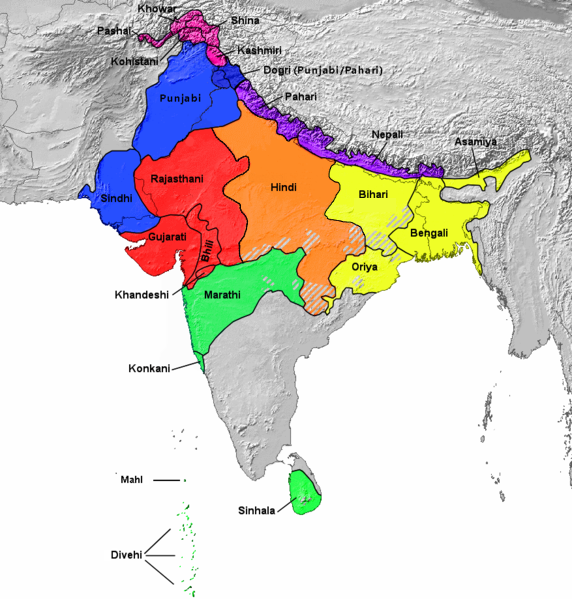|
Udant Martand
''Udant Martand'' (from Hindi, “The Rising Sun”) is the first Hindi language newspaper published in India. Started on 30 May 1826, from Calcutta (now Kolkata), the weekly newspaper was published every Tuesday by Pt. Jugal Kishore Shukla. It was closed on 4 December 1827 due to financial crisis. History By the early 19th century, educational publications in Hindi had already started, thus journalism was only a matter time. By the 1820s, newspapers in several Indian languages were starting, including Bengali and Urdu; however, printing in Devanagari script was still rare. Soon after Calcutta School Book started printing, '' Samachar Darpan'', a Bengali journal which started in 1819, had some portions in Hindi. However, Hindi reading audience base was still at a nascent stage. Thus few of the early attempts were successful, but they nevertheless were a start. Shukla was a lawyer originally from Kanpur in Uttar Pradesh, who had settled in Calcutta, and became Proceedings ... [...More Info...] [...Related Items...] OR: [Wikipedia] [Google] [Baidu] |
Newspaper
A newspaper is a periodical publication containing written information about current events and is often typed in black ink with a white or gray background. Newspapers can cover a wide variety of fields such as politics, business, sports and art, and often include materials such as opinion columns, weather forecasts, reviews of local services, obituaries, birth notices, crosswords, editorial cartoons, comic strips, and advice columns. Most newspapers are businesses, and they pay their expenses with a mixture of subscription revenue, newsstand sales, and advertising revenue. The journalism organizations that publish newspapers are themselves often metonymically called newspapers. Newspapers have traditionally been published in print (usually on cheap, low-grade paper called newsprint). However, today most newspapers are also published on websites as online newspapers, and some have even abandoned their print versions entirely. Newspapers developed in the 17th century ... [...More Info...] [...Related Items...] OR: [Wikipedia] [Google] [Baidu] |
Khari Boli
Kauravi ( hi, कौरवी, ur, ), also known as Khaṛībolī is a set of Western Hindi varieties of Shauraseni Prakrit mainly spoken in Northwestern Uttar Pradesh. Standard Hindi and Urdu are based on Khariboli, specifically on its Dehlavi dialect(Old Hindi), becoming the Hindustani language of the Ganga-Jamuni Tehzeeb. Hindustani gained prestige when it was accepted along with Persian as a language of the court, before that it was only a sociolect of the ruling classes and a language the Persianate states spoke to their subjects in. Modern Kauravi contains some features, such as gemination, which give it a distinctive sound and differentiates it from Braj, Awadhi and Hindustani. An early form of Kauravi became the main basis of Old Hindi, which subsequently developed into Hindustani and then into Hindi and Urdu. Geographical distribution Khariboli is spoken in the rural surroundings of Delhi and northwestern Uttar Pradesh, as well as in some neighbouring areas of ... [...More Info...] [...Related Items...] OR: [Wikipedia] [Google] [Baidu] |
Newspapers Published In Kolkata
A newspaper is a periodical publication containing written information about current events and is often typed in black ink with a white or gray background. Newspapers can cover a wide variety of fields such as politics, business, sports and art, and often include materials such as opinion columns, weather forecasts, reviews of local services, obituaries, birth notices, crosswords, editorial cartoons, comic strips, and advice columns. Most newspapers are businesses, and they pay their expenses with a mixture of subscription revenue, newsstand sales, and advertising revenue. The journalism organizations that publish newspapers are themselves often metonymically called newspapers. Newspapers have traditionally been published in print (usually on cheap, low-grade paper called newsprint). However, today most newspapers are also published on websites as online newspapers, and some have even abandoned their print versions entirely. Newspapers developed in the 17th century, as ... [...More Info...] [...Related Items...] OR: [Wikipedia] [Google] [Baidu] |
Publications Disestablished In 1827
To publish is to make content available to the general public.Berne Convention, article 3(3) URL last accessed 2010-05-10.Universal Copyright Convention, Geneva text (1952), article VI . URL last accessed 2010-05-10. While specific use of the term may vary among countries, it is usually applied to text, images, or other content, including paper ( [...More Info...] [...Related Items...] OR: [Wikipedia] [Google] [Baidu] |
Defunct Newspapers Published In India
{{Disambiguation ...
Defunct (no longer in use or active) may refer to: * ''Defunct'' (video game), 2014 * Zombie process or defunct process, in Unix-like operating systems See also * * :Former entities * End-of-life product * Obsolescence Obsolescence is the state of being which occurs when an object, service, or practice is no longer maintained or required even though it may still be in good working order. It usually happens when something that is more efficient or less risky r ... [...More Info...] [...Related Items...] OR: [Wikipedia] [Google] [Baidu] |
Weekly Newspapers Published In India
Weekly, The Weekly, or variations, may refer to: News media *Weekly (news magazine), ''Weekly'' (news magazine), an English-language national news magazine published in Mauritius *Weekly newspaper, any newspaper published on a weekly schedule *Alternative newspaper, also known as ''alternative weekly'', a newspaper with magazine-style feature stories *''The Weekly with Charlie Pickering'', an Australian satirical news program *''The Weekly with Wendy Mesley'', a Canadian Sunday morning news talk show *''The Weekly'', the original name of the television documentary series ''The New York Times Presents'' Other *Weekley, a village in Northamptonshire, UK *Weeekly, a South Korean girl-group See also * *Weekly News (other) *Weekley (surname) {{disambig ... [...More Info...] [...Related Items...] OR: [Wikipedia] [Google] [Baidu] |
Defunct Hindi-language Newspapers
Defunct (no longer in use or active) may refer to: * ''Defunct'' (video game), 2014 * Zombie process or defunct process, in Unix-like operating systems See also * * :Former entities * End-of-life product * Obsolescence {{Disambiguation ... [...More Info...] [...Related Items...] OR: [Wikipedia] [Google] [Baidu] |
Newspapers Established In 1826
A newspaper is a periodical publication containing written information about current events and is often typed in black ink with a white or gray background. Newspapers can cover a wide variety of fields such as politics, business, sports and art, and often include materials such as opinion columns, weather forecasts, reviews of local services, obituaries, birth notices, crosswords, editorial cartoons, comic strips, and advice columns. Most newspapers are businesses, and they pay their expenses with a mixture of subscription revenue, newsstand sales, and advertising revenue. The journalism organizations that publish newspapers are themselves often metonymically called newspapers. Newspapers have traditionally been published in print (usually on cheap, low-grade paper called newsprint). However, today most newspapers are also published on websites as online newspapers, and some have even abandoned their print versions entirely. Newspapers developed in the 17th century ... [...More Info...] [...Related Items...] OR: [Wikipedia] [Google] [Baidu] |
Journalism
Journalism is the production and distribution of reports on the interaction of events, facts, ideas, and people that are the "news of the day" and that informs society to at least some degree. The word, a noun, applies to the occupation (professional or not), the methods of gathering information, and the organizing literary styles. Journalistic media include print, television, radio, Internet, and, in the past, newsreels. The appropriate role for journalism varies from countries to country, as do perceptions of the profession, and the resulting status. In some nations, the news media are controlled by government and are not independent. In others, news media are independent of the government and operate as private industry. In addition, countries may have differing implementations of laws handling the freedom of speech, freedom of the press as well as slander and libel cases. The proliferation of the Internet and smartphones has brought significant changes to the media la ... [...More Info...] [...Related Items...] OR: [Wikipedia] [Google] [Baidu] |
North India
North India is a loosely defined region consisting of the northern part of India. The dominant geographical features of North India are the Indo-Gangetic Plain and the Himalayas, which demarcate the region from the Tibetan Plateau and Central Asia. The term North India has varying definitions. The Ministry of Home Affairs in its Northern Zonal Council Administrative division included the states of Haryana, Himachal Pradesh, Punjab and Rajasthan and Union Territories of Chandigarh, Delhi, Jammu and Kashmir and Ladakh. The Ministry of Culture in its ''North Culture Zone'' includes the state of Uttarakhand but excludes Delhi whereas the Geological Survey of India includes Uttar Pradesh and Delhi but excludes Rajasthan and Chandigarh. Other states sometimes included are Bihar, Gujarat, Jharkhand, Madhya Pradesh and West Bengal. North India has been the historical centre of the Mughal Empire, the Delhi Sultanate and the British Indian Empire. It has a diverse culture, and includ ... [...More Info...] [...Related Items...] OR: [Wikipedia] [Google] [Baidu] |
Hindi Belt
The Hindi Belt, also known as the Hindi Heartland, is a linguistic region encompassing parts of northern, central, eastern and western India where various Central Indo-Aryan languages subsumed under the term 'Hindi' (for example, by the Indian census) are spoken. The Hindi belt is sometimes also used to refer to nine Indian states whose official language is ''Hindi'', namely Bihar, Chhattisgarh, Haryana, Jharkhand, Madhya Pradesh, Rajasthan, Uttar Pradesh, Himachal Pradesh, Uttarakhand and the union territory of Chandigarh and the National Capital Territory of Delhi. It is also referred to as the Hindi–Urdu Belt or Hindustani Belt by some writers. Hindi as a dialect continuum Hindi is part of the Indo-Aryan dialect continuum that lies within the cultural Hindi Belt in the northern plains of India. Hindi in this broad sense is a sociolinguistic rather than an ethnic concept. This definition of Hindi is one of the ones used in the Indian census, and results in more th ... [...More Info...] [...Related Items...] OR: [Wikipedia] [Google] [Baidu] |
Braj Bhasha
The Braj language, ''Braj Bhasha'', also known as Vraj Bhasha or Vrij Bhasha or Braj Bhāṣā or Braji or Brij Bhasha or Braj Boli, is a Western Hindi language. Along with Awadhi (a variety of Eastern Hindi), it was one of the two predominant literary languages of North-Central India before the switch to Hindustani in the 19th century. Braj is spoken by people in the vaguely defined region of Braj (Braj Bhoomi) in northern India, which was a political state in the era of the ''Mahabharata'' wars. According to ancient Hindu texts such as the Bhagavata Purana, the Kingdom of Surasena is described as spreading through Braj (also known as Brij, Vrija or Vraja), where the incarnation of Vishnu, Krishna was born and spent his childhood days, according to tradition. This region lies in the Agra-Mathura- Hathras-Firozabad-Aligarh area & Etawah-Mainpuri-Auraiya area, and stretches as far as the environs of Delhi. In modern India, this area lies mostly in central western Uttar Prade ... [...More Info...] [...Related Items...] OR: [Wikipedia] [Google] [Baidu] |






